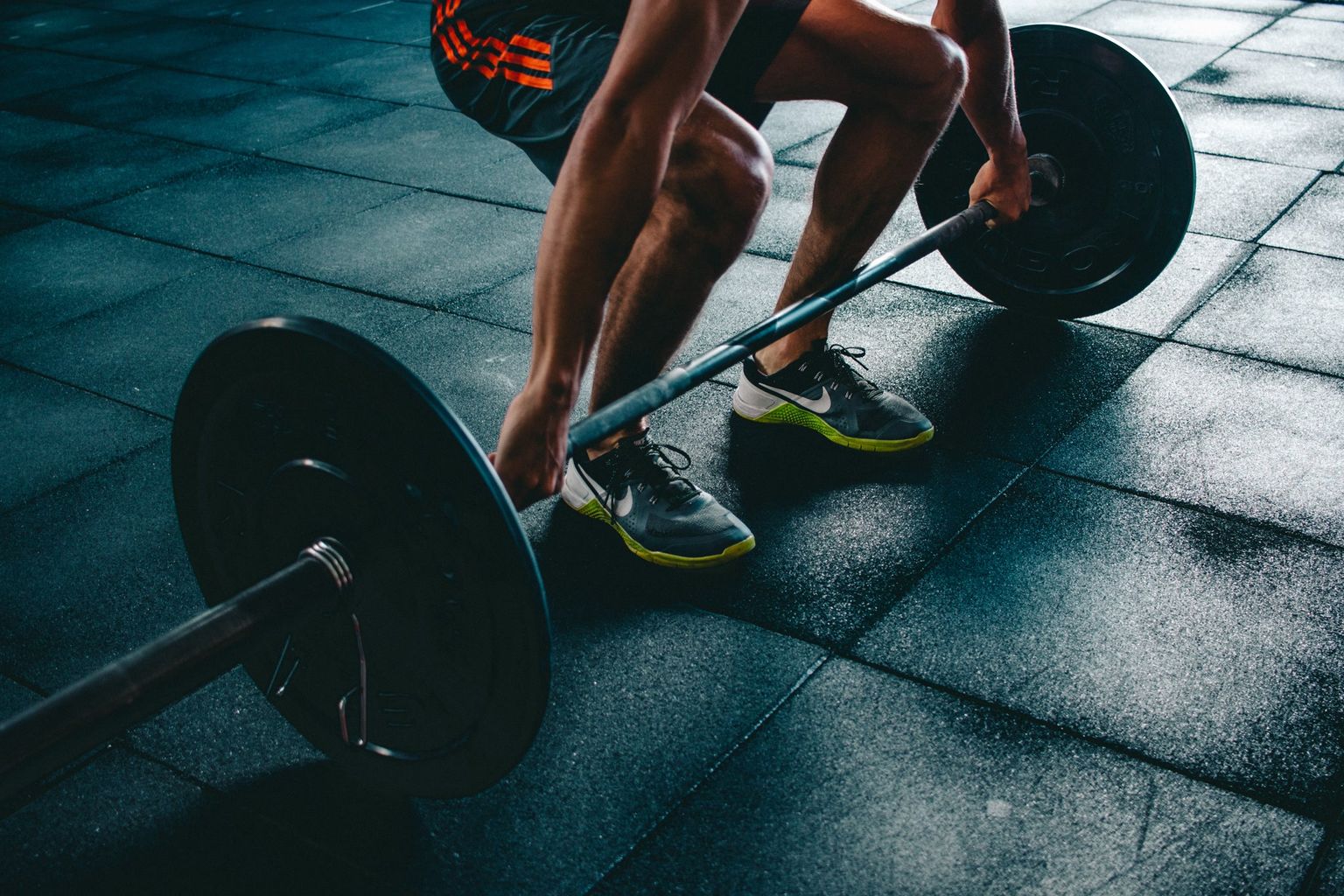Stationary Bike Calories: Calculator, Charts & Tips
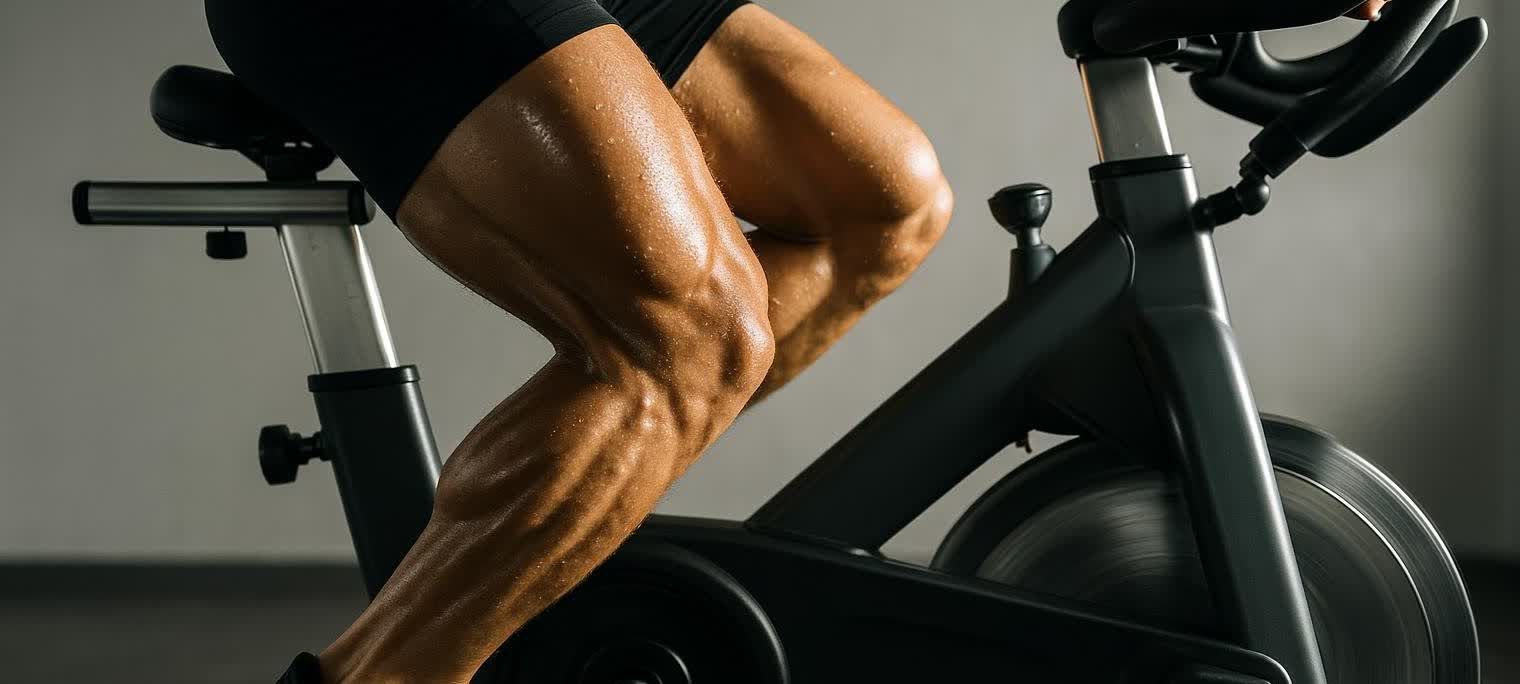
Stationary Bike Calories: Calculator, Charts & Tips
Ever wrapped up a sweaty ride on your Peloton, NordicTrack, or the dusty recumbent in your garage and wondered how much energy you're actually burning? Below you’ll find an easy-to-use calorie formula, quick-reference tables, and workout templates to translate any ride—steady, sprint-heavy, or rehab-friendly—into hard numbers.
TL;DR – A 155-lb rider burns roughly 150–400 calories in 30 minutes on a stationary bike, depending on resistance and cadence. Scroll for the exact math.
How to Calculate Calories Burned on a Stationary Bike
Researchers use METs (Metabolic Equivalent of Task) to compare exercise intensity to resting. One MET equals the oxygen you consume at rest—about 3.5 milliliters per kilogram of body weight per minute.
Calories per minute = (MET × 3.5 × body-weight in kg) ÷ 200.
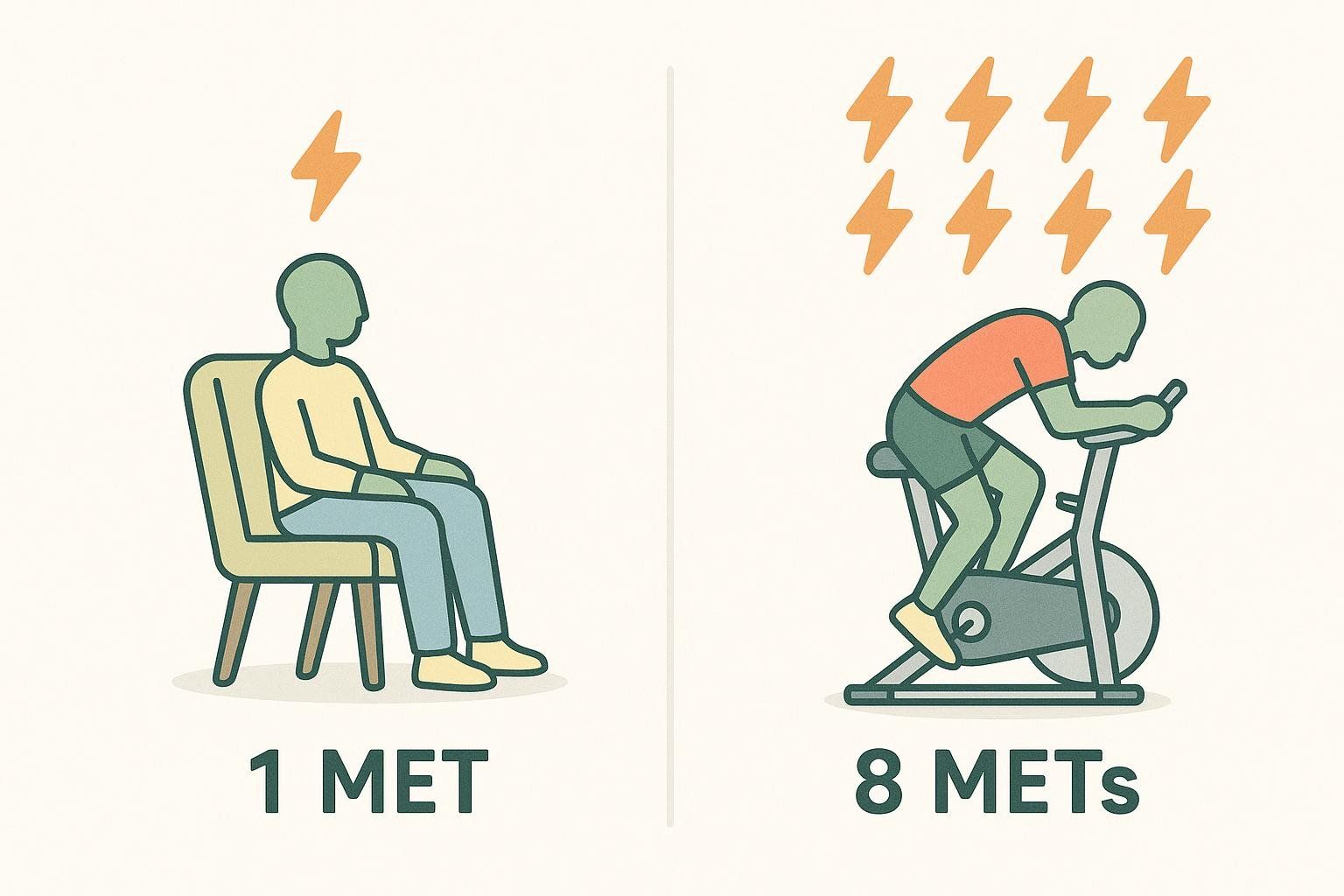
• 3.5 mL/kg/min anchors the equation to resting oxygen use (1 MET).
• ÷ 200 converts oxygen consumption (in milliliters) into kilocalories.
For a deeper dive into the math, see this Healthline guide.
Plug in your weight (kg) and the MET value that matches your bike’s watt output (values come from the 2024 Compendium of Physical Activities):
| Watt Range (stationary) | Effort Label | METs |
|---|---|---|
| 30–49 W | Very light | 3.5 |
| 50–74 W | Light | 4.0 |
| 90–100 W | Moderate | 6.0 |
| 125 W | Moderately hard | 6.8 |
| 150 W | Vigorous | 8.0 |
| 200–229 W | Very vigorous | 10.8 |
| 230–250 W | Racing | 12.5 |
Calorie Burn Chart – 30-Minute Ride
| Body Weight | Light (4 METs) | Moderate (6 METs) | Vigorous (8 METs) | Very Vigorous (10.8 METs) |
|---|---|---|---|---|
| 125 lb (57 kg) | 119 kcal | 179 kcal | 238 kcal | 321 kcal |
| 155 lb (70 kg) | 148 kcal | 221 kcal | 295 kcal | 399 kcal |
| 185 lb (84 kg) | 176 kcal | 265 kcal | 352 kcal | 476 kcal |
| 215 lb (98 kg) | 205 kcal | 307 kcal | 410 kcal | 552 kcal |
Numbers assume steady-state pacing. High-intensity intervals often add 6–15 % more total calories via the excess post-exercise oxygen consumption (EPOC) effect (Cleveland Clinic).
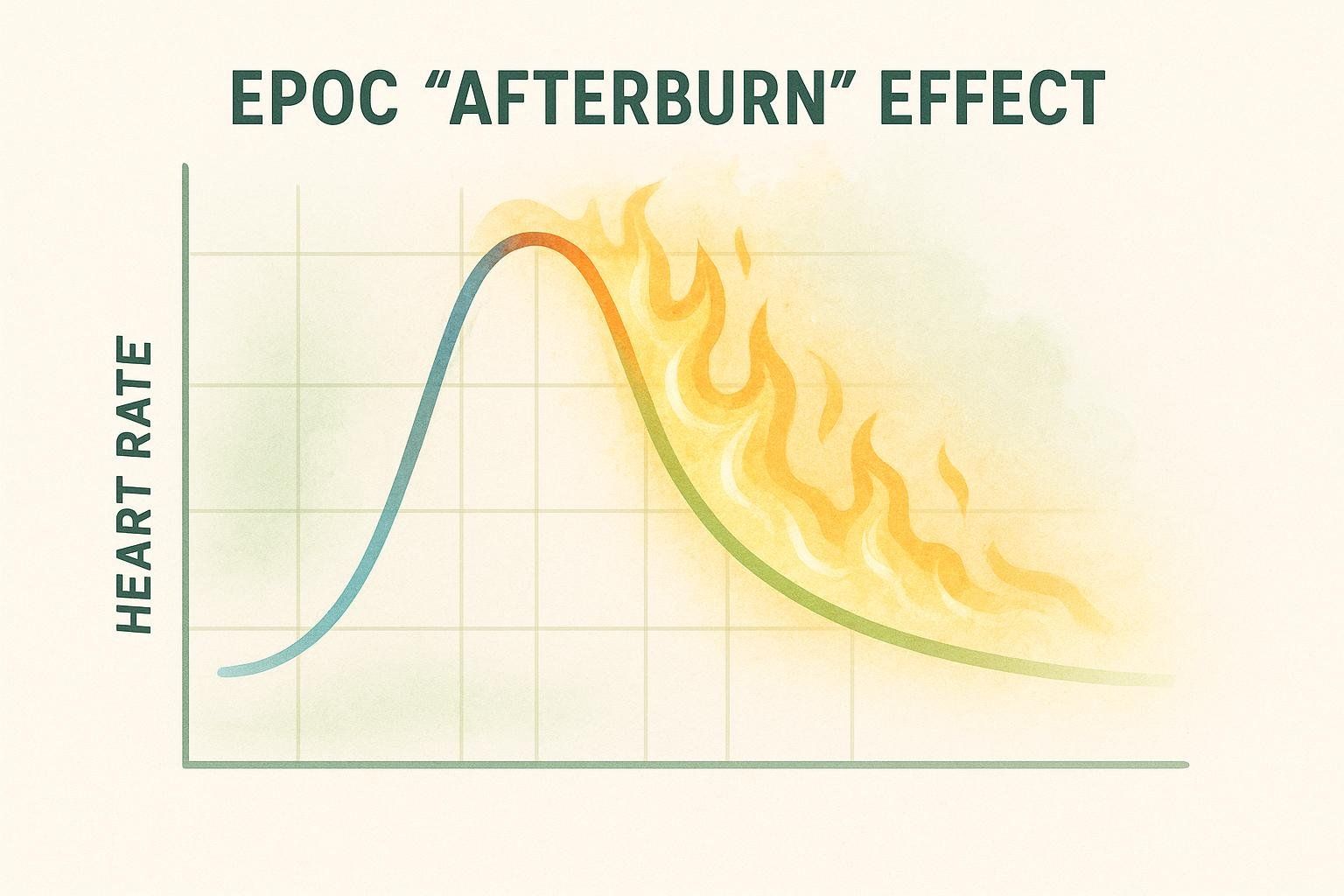
Why Your Numbers May Differ
- Resistance & Cadence – Cranking the flywheel adds watts faster than upping speed alone.
- Bike Type – Upright and spin bikes engage more stabilizing muscles than recumbents, often resulting in a slightly higher calorie burn.
- Body Size – Heavier riders expend more energy moving the pedals—even on a stationary platform.
- Fitness Level – Improved fitness makes you more efficient, so you burn fewer calories for the same effort. But that efficiency lets you handle higher intensities, leading to greater total burn during hard workouts.
- High-Intensity Efforts – Workouts that push your heart rate to 70–85 % of its maximum create the intensity that triggers the EPOC “afterburn” (NASM).
- Power-Meter Accuracy – Budget bikes can under-report watts by 10–20 %, according to tests from RunBundle.
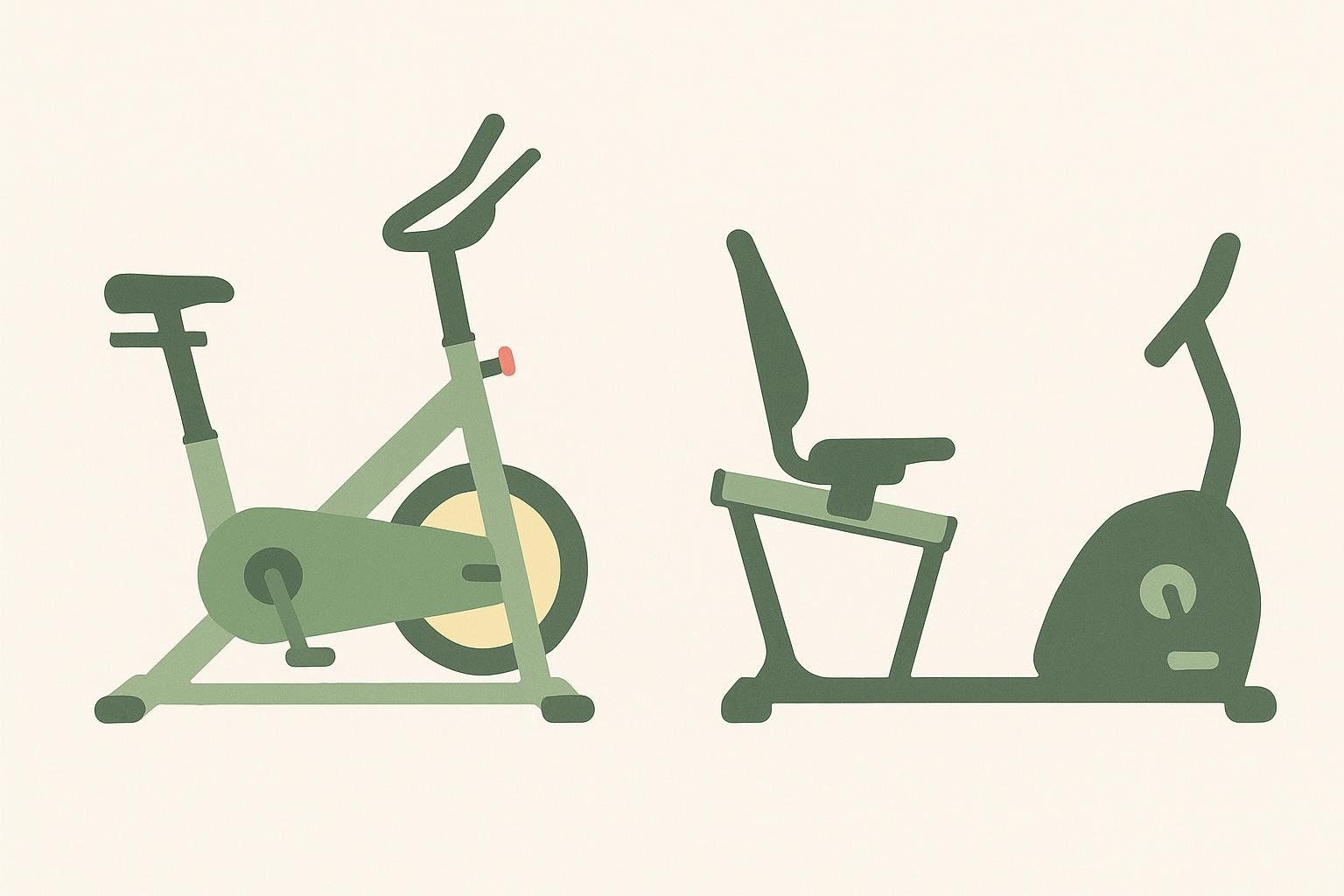
Stationary Bike vs. Outdoor Cycling vs. Treadmill
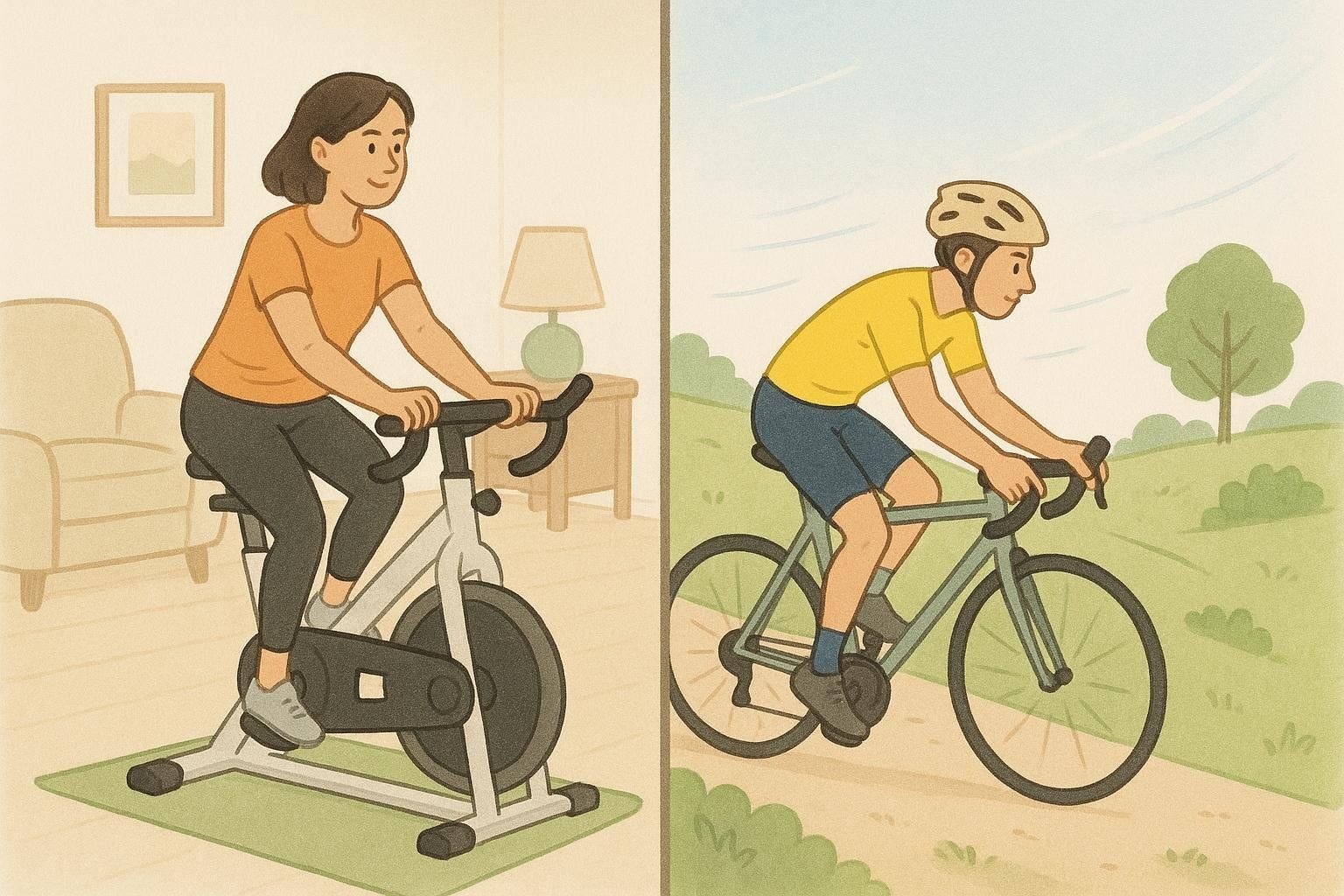
| 30-Minute Moderate Session | 125 lb Person | 155 lb Person | 185 lb Person |
|---|---|---|---|
| Stationary Bike (~6 METs) | ~179 kcal | ~221 kcal | ~265 kcal |
| Outdoor Cycling @ 12 mph (~8 METs) | ~238 kcal | ~295 kcal | ~352 kcal |
| Treadmill Jog @ 5 mph (~8.3 METs) | ~247 kcal | ~306 kcal | ~365 kcal |
Outdoor miles add wind and rolling resistance, boosting METs. However, the stationary bike is an efficient, low-impact way to burn calories—ideal if you’re nursing joints or following a rehab plan. For more joint-friendly options, see our complete guide to low-impact cardio.
Three Goal-Based Workout Templates
1. Steady-State Fat-Loss Ride
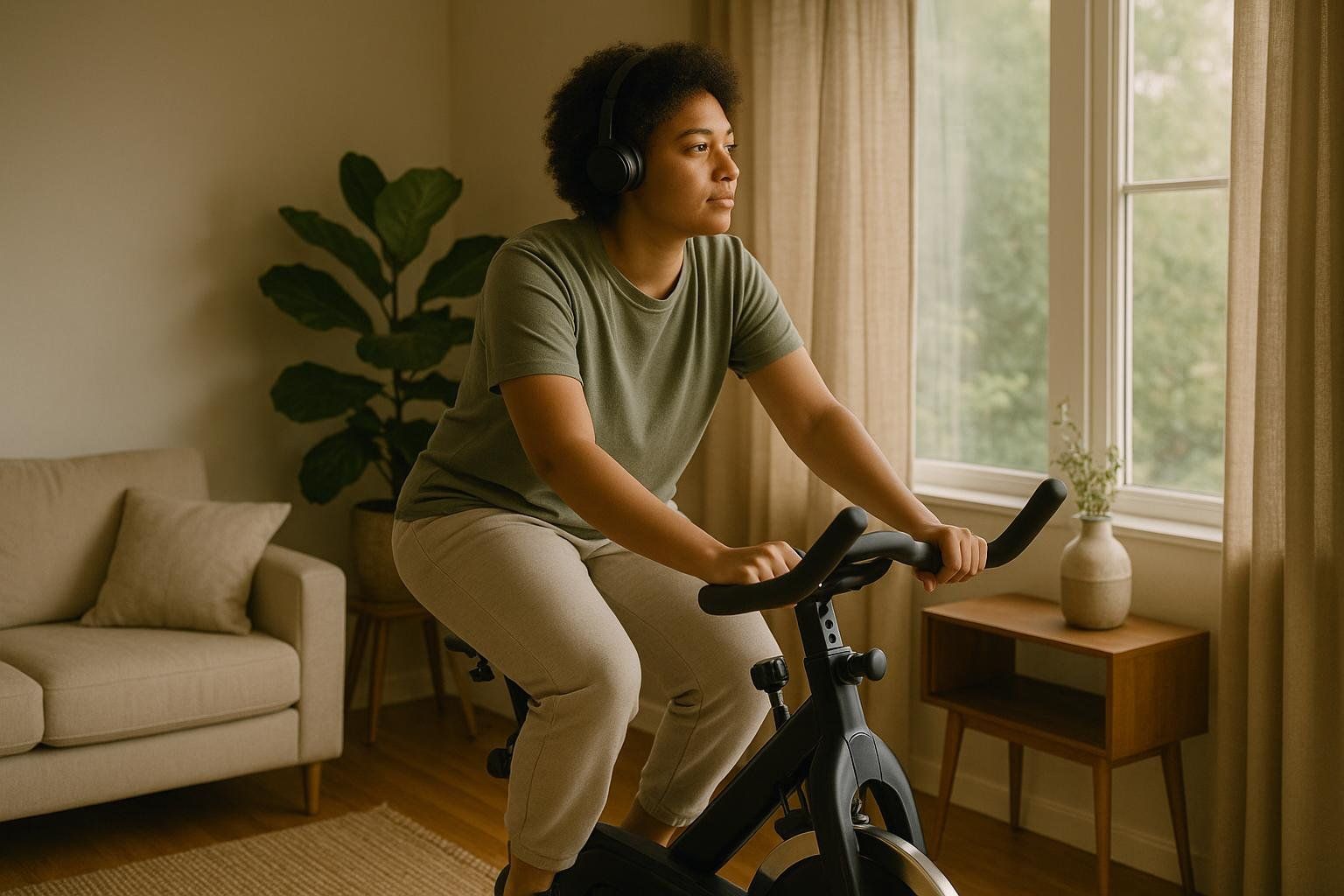
Time: 45 min
Intensity: 60–65 % max HR (≈ 5–6 METs)
Projected Burn (155 lb): ~330 kcal
Why it works: Long, conversational efforts encourage recovery-friendly hormone responses and align with the benefits of steady-state cardio.
2. 20-Minute HIIT Power Session
Format: 4 × 2-min hard (≈ 10 METs) / 2-min easy (≈ 4 METs) + 4 min warm-up & cool-down at moderate effort (≈ 6 METs)
Projected Burn (155 lb): ~180–195 kcal (afterburn included)
Tip: HIIT is time-efficient but demanding—cap at 2–3 sessions weekly and alternate with strength work.
3. Knee-Friendly Rehab Ride
Time: 30 min
Intensity: 30–50 W (≈ 3.5–4 METs)
Projected Burn (155 lb): ~150 kcal
Keep the seat high to minimize knee flexion and stick to pain-free range of motion.
Level-Up With BodySpec Data
A DEXA scan provides a precise snapshot of your overall lean mass, fat mass, and bone density—letting you verify whether your training plan, including those bike sessions, is truly shifting your body composition in the right direction.
Ready to scan? Find an appointment near you.
FAQs
How many calories does 30 minutes on a stationary bike burn?
Anywhere from ~120 kcal at very light effort to > 550 kcal at very vigorous effort for common body-weight ranges (see chart above).
Is 20 minutes on a stationary bike enough for weight loss?
Yes—if you keep intensity high (HIIT or > 8 METs) and maintain a caloric deficit. Combine those rides with resistance training to preserve lean mass, which you can track via a DEXA scan.
Do recumbent bikes burn fewer calories?
Often, yes. Research comparing the two designs found recumbent sessions can burn ~20 % fewer calories than upright sessions of identical duration and intensity (CAROL Bike science review).
Can I use heart rate instead of power to estimate calories?
You can, but HR is influenced by sleep, heat, and caffeine. According to TrainingPeaks, power-based calculations are typically within ±5 % accuracy, whereas HR estimates can be off by 10–20 %.
Does sweating more mean I’m burning more calories?
No—sweating is primarily a cooling mechanism rather than a direct indicator of calorie expenditure.
Key Takeaways
• Body weight, resistance, intensity, and ride duration combine to determine total calories burned.
• HIIT delivers quick, high-intensity calories and a measurable afterburn; steady rides rack up calories through longer time in the saddle.
• MET-based math lets you turn any stationary bike session into a data-driven number you can track and improve.
